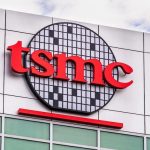Thanks to its experimental gene therapy injection for COVID-19, in 2022, Pfizer became the first drug company in history to break $100 billion in annual sales.1 But its mere existence didn’t ensure Pfizer’s success.
No, massive media promotion and government-backed coercion did that. Not only did the U.S. government pay news media a staggering $1 billion to promote and build public confidence in the experimental jab, but as reported by Russell Brand in the video above, Pfizer also poured billions of dollars into advertising.
In 2022, Pfizer spent $2.8 billion on ads, an increase of $800 million from 2021. On top of that, Pfizer also paid big bucks to consumer, medical and civil rights groups to lobby for COVID jab mandates. Journalist Lee Fang reviewed this in his interview with Brand (video above) and in an April 24, 2023, Substack article.2 As Fang told Brand:
“San Francisco … in September of 2021, enacted a very kind of strong mandate with no exemption for prior immunity … or … natural immunity. Pfizer was not playing a visible role here. They didn’t comment on any of the articles. They weren’t really talking to the press.
You saw consumer groups, civil rights groups, patient groups, doctors groups, public health organizations, all saying these mandates are necessary, even though there wasn’t a lot of scientific evidence to support the basis that we needed these mandates. [The shots] were sold to us with the claim that they would stop transmission of the virus.
You had this coalition of community groups saying we need the mandate. Well, I’m taking a look at new disclosures that show that many of those organizations, these third party organizations … were taking funds from Pfizer while lobbying for these controversial policies …
[The drug industry doesn’t] have to disclose how much they’re spending on television, how much they’re spending on TikTok ads, how much they’re giving to these front groups, or these doctors groups, or these public health groups that set the nature of the debate.
They appear in the news media, they create events, and they create a discourse that looks authentic, that looks organic, but it benefits the bottom line of their benefactors — companies like Pfizer.
And the vaccine debate … has shaped our lives in the last three years of the pandemic. But it’s also not that unique in the sense that every major pharmaceutical company in the United States engages in these practices. They pressure regulators, they spend so much money on direct-to-consumer advertising.
And really, they kind of just dominate the entire public policy debate. So we can talk about a lot of other special interest groups, but Pharma is unique [in terms of] the raw amounts of money they spend to control the entire public sector, on regulatory policy, on everything, in terms of how it affects medicine …”
Dozens of Health Care Organizations Called for Mandates
Special interest groups paid by Pfizer3 to push for COVID jab mandates and coercive vaccine policies include the Chicago Urban league (which argued that the jab mandate would benefit the Black community), the National Consumers League, the Immunization Partnership, the Advertising Council and a long list of universities and cancer, liver diseases, cardiology, rheumatology and medical science organizations.
Pfizer didn’t have to take a prominent stand to argue for vaccine mandates, which would have been an obvious conflict of interest. They paid others to push the mandates for them.
Each of these organizations received anywhere from several thousand to hundreds of thousands of dollars from Pfizer in 2021 alone. Is it any wonder, then, that more than 50 major health care organizations called for vaccine mandates that year, including for their own workers?4 I don’t think so.
Pfizer didn’t have to take a prominent stand to argue for vaccine mandates, which would have been an obvious conflict of interest. They paid others to push the mandates for them. Of course, Pfizer and the U.S. government are also in partnership, as acknowledged on Pfizer’s Political Partnership page.5
New COVID Jab Guidelines Issued
In related news, April 19, 2023, the U.S. Centers for Disease Control and Prevention revised its COVID jab guidance.6,7,8 The original monovalent mRNA shots are no longer recommended for use in the U.S. Instead, the CDC recommends people 6 years old and older get an updated bivalent mRNA COVID shot, even if they’ve not completed the monovalent series.
The update comes on the heels of the World Health Organization’s Strategic Advisory Group of Experts on Immunization’s (SAGE) meeting in late March 2023, during which they decided that continued injection efforts should be focused on getting boosters into the arms of the elderly and those with underlying conditions, including young children, young adults and pregnant women with diabetes, heart disease or immunocompromising conditions. As reported by the WHO:9
“For the high priority group, SAGE recommends an additional booster of either 6 or 12 months after the last dose, with the timeframe depending on factors such as age and immunocompromising conditions.
All the COVID-19 vaccine recommendations are time-limited, applying for the current epidemiological scenario only, and so the additional booster recommendations should not be seen as for continued annual COVID-19 vaccine boosters …
Separate to the roadmap, SAGE also updated their recommendations on bivalent COVID-19 vaccines, now recommending that countries can consider using BA.5 bivalent mRNA vaccine for the primary series.”
Pfizer Intent on Replacing Conventional Vaccines With mRNA
But while the WHO seems to be backing off from endless COVID boosters for all, there’s clear evidence that mRNA gene therapy is here to stay — unless enough of us wake up and refuse them all. For example, as reported by BioProcess International, Pfizer is pushing mRNA as an alternative to current flu vaccines:10
“Last September, Pfizer initiated a Phase III study of its messenger RNA (mRNA) based flu vaccine, following a 2018 partnership with a then little-know German biotech BioNTech. In 2020, both BioNTech and mRNA were thrown into the global spotlight due a successful COVID-19 vaccine, developed by Pfizer and BioNTech in just nine months.
Now Pfizer is leveraging a similar approach to mRNA beyond COVID through a roadmap that aims to reduce bureaucracy and increase collaboration.
According to Pfizer’s VP of mRNA Commercial Strategy & Innovation and Global Pandemic Security Lead Jane True … mRNA-based vaccines have the ability to replace current technologies in the long-term.”
Moderna also launched an mRNA flu jab trial in the fall of 2022.11 We now know the COVID shot doesn’t protect you against SARS-CoV-2 infection or transmission, so why would anyone believe the flu shot will be any different? Are they tweaking it somehow to block infection? Or will it be a repeat of COVID — all risk and no benefit?
There’s cause for additional concern when it comes to mRNA flu shots, because they’ve already admitted that the viral strains targeted can and will be updated on the fly in the middle of the flu season, should it turn out that the flu strains selected in February are a mismatch to the circulating strains that following winter.12
The industry wants you to believe that changing the antigen has no bearing on the potential side effects, but they have no evidence to support that assertion. Whenever you change the antigen, you run the risk of new side effects, because not all viral antigens affect your immune system the same way.
New mRNA Shots Are Being Fast-Tracked
In addition to mRNA-based flu shots, a number of other ones are also in the works, and several are being fast-tracked. For example, the U.S. Food and Drug Administration is fast-tracking Moderna’s mRNA shot for respiratory syncytial virus (RSV), which is based on the same platform as the COVID jab.
At present, there’s no approved vaccine available for RSV, and the reason for that is because none were ever able to pass trials. As with coronavirus, previous efforts to develop an RSV vaccine met with failure as test subjects had a pesky tendency to die or become seriously ill when exposed to the wild virus, thanks to paradoxical immune enhancement (PIE), also known as antibody dependent enhancement (ADE).
By fast-tracking Moderna’s mRNA RSV shot, the FDA is completely ignoring the possibility that they may be creating an avalanche of ADE-related illness from the COVID shot. Adding another injection for a respiratory virus that has historically been associated with ADE could be extremely risky, yet they’re moving full steam ahead.
Moderna’s personalized cancer shot is also being fast-tracked, both in the U.S.13 and the European Union.14 mRNA shots for shingles and genital herpes are also in the works.15 Overall, the entire industry, and governments around the world, seem hell-bent on transitioning to mRNA-based gene therapy for just about everything.
Putting Patients in the Driver’s Seat
On a final side note, I recently interviewed Laura Bartlett and Greta Crawford, founder of protocolkills.com, about how to put patients back in the driver’s seat when they’re admitted to the hospital. I hope to run their interview May 7; you won’t want to miss it.
A key “weapon” in your arsenal to put yourself squarely in the driver’s seat is a novel informed consent document that specifies the treatments that you do NOT consent to, such as mRNA injections and other vaccines, remdesivir and other deadly COVID-19 drugs, and mechanical ventilation for COVID-19. It also specifies the COVID treatments you DO request and consent to, such as oxygen, nutrition, hydration, ivermectin and other remedies.
It’s basically a document that lists your current consent wishes, and it needs to be written, signed and notarized BEFORE you go to the hospital. It must also be entered into your medical record, so that everyone involved in your care has access to it and know what your wishes are.
Bartlett and Crawford have developed a template for this document that you can use and amend as you wish. This strategy is also being promoted by Dr. Mary Talley Bowden. You can find the template here. I will be offering a revised template that is modified to make sure you don’t get disease-producing food while in the hospital loaded with LA (linoleic acid).
This form is basically one of the most effective ways to protect yourself against harmful treatments in the hospital that can kill or permanently disable you.
Hospital staff are REQUIRED to follow your written directives. So, having this notarized document entered into your electronic medical record, sent to the hospital CEO and given to any doctor that treats you could literally save your life and prevent you from being taken “hostage” if you’re ever hospitalized. The KEY is to have this document ready BEFORE you go into the hospital.
Vaccine makers like Pfizer are using every possible means to ensure their products are forced on the population, but patients still do have rights. We must exercise those rights to the fullest, and this is the most effective way I have ever encountered to do that.






